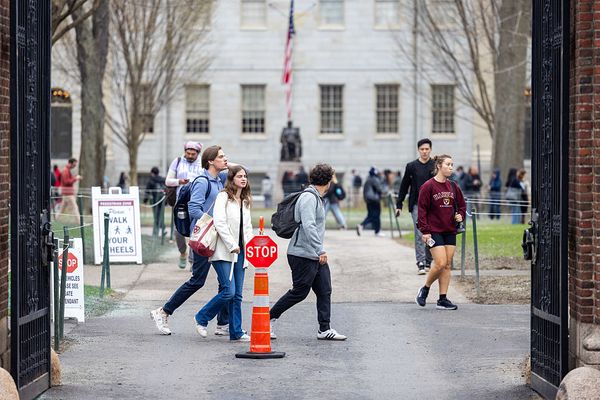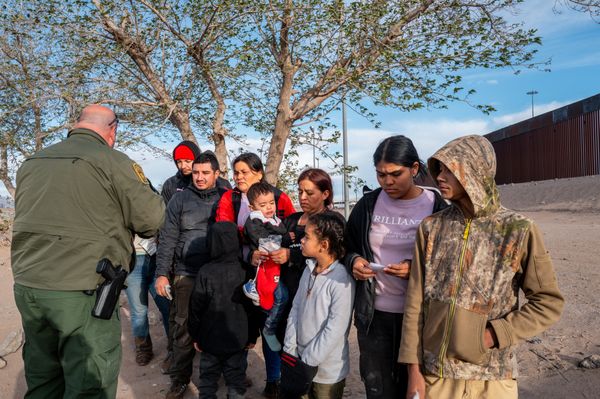
Afghan citizens who fled the country with American assistance after the US’s chaotic withdrawal from Afghanistan remain stranded in third countries, new documents shared exclusively with the Guardian suggest, some at prison-like facilities and many with no clarity about their prospects for resettlement.
US officials won’t say exactly how many Afghans remain at such sites, where they were taken after the withdrawal that involved hundreds of thousands fleeing for their lives during the Taliban’s lightning takeover in 2021. Some advocates estimate that “hundreds” remain stranded in temporary facilities in up to three dozen countries.
A set of government records published on Tuesday offers previously undisclosed details about the US government’s involvement with operations at these sites. The records describe family separations, deteriorating mental health conditions, inadequate facilities and fears of forcible repatriation.
The documents, which offer a snapshot up to the fall of 2023, were obtained by the Center for Constitutional Rights, Abolitionist Law Center and Muslim Advocates following litigation against the Departments of Defense, State and Homeland Security.
Sadaf Doost, an attorney and human rights program manager at Abolitionist Law Center, told the Guardian that advocates filed the records requests to seek information about conditions at a half dozen sites where they knew Afghans were being held. But the documents they obtained indicate that evacuated Afghans with pending applications to enter the US have been “detained, held, or otherwise forced to remain in limbo” in at least 36 countries, the groups wrote in a briefing guide.
“Other records we’ve obtained reveal letters upon letters of tireless appeals Afghan nationals made to US government officials – from detailing the lack of access to US embassies, lawyers and humanitarian and immigration-rights organizations to the untenable conditions to the collective trauma the community continues to endure,” Doost added.
It is not clear from the documents how many of the 36 countries are housing the evacuees in holding facilities; the advocates say they know of five facilities in four countries – the UAE, Qatar, Kosovo and Germany. As of April 2023, records show that 2,834 Afghans with pending US applications were in Qatar, 1,256 in the United Arab Emirates, 259 in Kosovo, and dozens more in other countries.
The Departments of Defense and Homeland Security did not respond to requests for comment. A spokesperson for the state department wrote in a statement to the Guardian that US government efforts to resettle eligible Afghans have been ongoing since 2021. While officials process their cases, applicants are “allowed to be present on third country platforms with the permission of the host country”, the spokesperson said, with the US covering the costs. The spokesperson added that the US issued more than 33,000 special immigrant visas for Afghans in the fiscal year 2024.
“US government efforts to resettle eligible Afghans with a legal immigration pathway to the United States have been ongoing since the suspension of operations at Embassy Kabul in August of 2021. These efforts continue today.”
‘Seems cruel to me’
More than 1.6 million people left Afghanistan in the chaotic aftermath of the US’s announcement in July 2021 that it would leave the country after fighting a two-decade war there. In the final days of the withdrawal the following month, US officials coordinated a rushed evacuation of about 120,000 people to dozens of countries around the world.
More than 190,000 Afghans have been resettled in the United States since then, according to the state department spokesperson, but the newly released records suggest that many of those stuck abroad have pending applications to enter the US on humanitarian or other grounds. A different public records request published in 2023 by the American Immigration Council shows that from January 2020 to April 2022, only 114 of 44,785 applications for humanitarian parole – which allows individuals in urgent situations to enter the United States when they are not otherwise eligible – or less than 0.3%, had been approved. Officials are also currently processing more than 20,000 “special immigrant visas” applications by Afghans who worked for the US government, and have rejected about 40%, Reuters reported.
Little is known about what US officials have referred to as the “lily pad” sites where some of them remain. The term is also used to informally refer to foreign countries’ facilities with a temporary presence of US personnel. Some of the sites are makeshift, government-run refugee housing facilities, others are on former US military bases. (The department spokesperson said the sites were now referred to as “platform locations”.)
Human rights advocates have previously raised concerns about some of these sites, in the UAE, Kosovo and Qatar. In 2023, Human Rights Watch warned that up to 2,700 Afghans were being arbitrarily detained at “Emirates Humanitarian City”, a logistics hub in Abu Dhabi where Afghan evacuees had been “locked up for over 15 months in cramped, miserable conditions with no hope of progress on their cases”.
The group found that Afghans at that camp were subjected to around-the-clock surveillance and constraints on movement and denied access to legal counsel, visitors and journalists, while poor medical care resulted in sometimes life-threatening complications. Several people told human rights investigators at the time that they were not allowed to leave the site.
Other sites were no better, with reported suicides and hunger strikes by Afghans at processing sites in Qatar and Kosovo. The Kosovo site earned the nickname “little Guantánamo” among residents because those held there were told that if they left the premises, their applications for US resettlement would be thrown out.
In one case described in the documents, an elderly woman with dementia was brought to the US while her “caregiver” remained in the UAE, a state department official wrote in an email to colleagues, indicating that the plan was to move the woman into a nursing home. “Which seems cruel to me,” the official wrote. Another email exchange references someone who made it to the US while their “vulnerable mother and brother” remained in the UAE.
More than 17,000 people moved through the UAE site between August 2021 and January 2022 but fewer than 50 remain there today, according to the department spokesperson, who said that the US is “working with the UAE to determine resettlement options for the remaining population”.
US officials have denied in the past having a presence at sites where Afghans are being held abroad, but the records show they were involved in the establishment of at least some of them. The documents include agreements between the US and five countries – Qatar, Oman, Kuwait, Italy and Germany – detailing conditions for what the US called at the time the “temporary” relocation of Afghan citizens to these sites. In the agreements, US officials pledged to contribute to the “safety and comfort” of Afghans held in third countries, including providing for meals, medical care and educational needs. They promised the host countries to help maintain “order” at the sites, including by conducting “joint” patrols.
Such agreements were to be “short-term”, ranging from one month to under a year. But the records show that at least some were formally extended, in one case – in Qatar – at least through September 2023.
‘They made promises to prioritize Afghans’
Laila Ayub, an immigration attorney and co-director of Project ANAR, an advocacy group founded by Afghan American women to help Afghans resettling in the US, told the Guardian thousands of people who were promised pathways to special visas in return for their work with the US remain in Afghanistan or third countries. Many, she added, had grown so desperate that they have chosen to make their way to the US via treacherous routes through Latin America and the US-Mexico border. Others have returned to Afghanistan, despite the risks they face there.
“Decades of US foreign policy directly displaced many Afghans,” she added. “[US officials] made specific promises that they would prioritize Afghans and that they would give them a pathway, and we just haven’t seen that promise fulfilled.”
This week, a bipartisan group of more than 700 US veterans and current and former officials wrote a public letter urging the incoming Trump administration to preserve special visa and resettlement options for Afghans at risk, increase resources allocated to their processing, and protect them from broader immigration enforcement, which Trump has said would be his administration’s priority.
Shawn VanDiver, a US navy veteran and founder of #AfghanEvac, a group that works with the state department to help resettle Afghans and organized the letter, said that he fears that Donald Trump may shut down refugee arrivals like he did during his first term in office.
“We need a better wartime allies program,” VanDiver said, praising officials’ efforts to resettle an enormous number of people while noting that the process remains flawed. “The system is working as designed, but the system is designed to be difficult. It’s designed to make it hard.”







